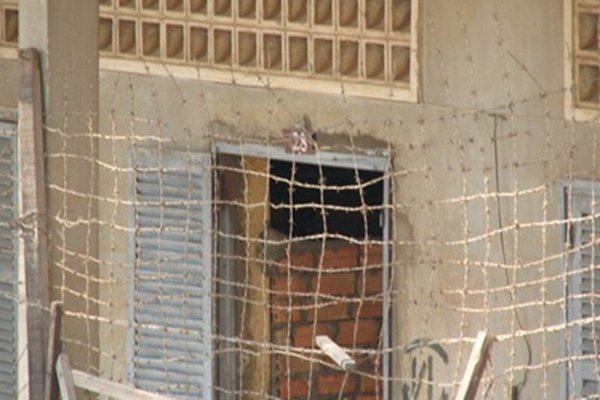Cambodia
Cambodian Memorial Sites
The Cambodian Memorial Sites: From centres of repression to places of peace and reflection testify to the regime of the radical Khmer Rouge regime that led to a loss of lives of 25% of the population in the 1970s.
The three sites Former M-13 prison, Tuol Sleng Genocide Museum, and the Killing Fields of Choeung Ek were places where detention, torture, and execution took place. They are now places of remembrance for the victims.
Community Perspective: reviewers doubt whether ‘Places of Memory’ like this should have a place on the List, but there is no denying the horrors and global relevance. Two of the locations can be easily visited as a tourist as part of the tourism circuit around Phnom Penh.
Site Info
Official Information
- Full Name
- Cambodian Memorial Sites: From centres of repression to places of peace and reflection (ID: 1748)
- Country
- Cambodia
- Status
-
Inscribed 2025
Site history
History of Cambodian Memorial Sites
- 2025: Inscribed
- Meets Criterion 6
- 2023: Preparatory Assistance
- For Preparing and assisting the nomination of the Serial site. “Cambodian Memorial Sites: M-13, Tuol Sleng Genocide Museum, Choeung Ek Genocidal Center”
- 2020: Added to Tentative List
- Added to tentative list
- Type
- Cultural
- Criteria
- vi
Links
- UNESCO
- whc.unesco.org
All Links
UNESCO.org
- whc.unesco.org — whc.unesco.org
Community Information
- Community Category
- Human activity: Sites of Memory
Travel Information
Recent Connections
-
Perfect Inscriptions
2025
-
Stupa
Choeung Ek stupa
-
Ossuary
Choeung Ek stupa
Connections of Cambodian Memorial Sites
- Geography
-
-
Mekong Basin
Located in Phnom Penh which is in Mekong Basin and Choeung Ek was part of flood plain of Mekong -
Located in a Capital City
Phnom Penh
-
- History
-
-
Historical Events
"the events of the Khmer Rouge repressive system of imprisonment, interrogation, torture and execution" (OUV crit vi) -
Cold War
Part of communism spreading in SE Asia: "the Cambodia Killing Fields were a devastating consequence of Cold War rivalries that fueled and prolonged a brutal conflict. The superpowers' focus on containing communism or expanding their influence contributed to the conditions that allowed the Khmer Rouge to rise and carry out their genocidal policies, and subsequently, to the tragic delay in bringing justice to the victims." (Google Gemini)
-
- Ecology
-
-
Notable Trees
The Execution Tree or the Killing Tree, the tree at Choeung Ek Khmer Rouge used to murder babies and children
-
- Architecture
-
-
Geomancy
Choeung Ek was a Chinese Cemetery that was selected under Feng Shui
-
- World Heritage Process
- Religion and Belief
- Human Activity
-
-
Communism
The Khmer Rouge was the Communist Party of Kampuchea -
Thanatourist destination
Killing Fields -
Memories of recent conflicts
"portray the abuses of human rights by the Khmer Rouge regime between 1971 and 1979" (brief description)
-
- Constructions
-
-
Ossuary
Choeung Ek stupa
-
Protective Shelters
in Choeung Ek to protect part of excavated mass grave -
Prison
S21 Tuol Sleng Genocide Museum
-
- WHS on Other Lists
-
-
Memory of the World
Tuol Sleng Genocide Museum's archives
-
- Timeline
-
-
Built in the 20th century
between 1973 and 1979
-
- Visiting conditions
-
-
Foreigner prices
Free for locals and $5.00 for foreigner
-
- WHS Names
-
-
Epic Subtitles
"From centres of repression to places of peace and reflection" -
Peace
Holds the word "Peace" in its official name
-
News
No news.
Recent Visitors
Visitors of Cambodian Memorial Sites
- AC
- Adrian Turtschi
- Alejandro Lau
- Alexander Parsons
- Alex Goh
- Ammon Watkins
- AmyAbroad
- Anne
- basementonline
- Bernard Joseph Esposo Guerrero
- Bill Maurmann
- Boj
- Bram de Bruin
- Brendan Carroll
- Carlo Sarion
- Chantal den Haan
- ChrisN
- Christravelblog
- Cluckily
- Coppi
- CugelVance
- cutecid
- Deffra
- Delphine Delaunay
- Dimitar Krastev
- DouglasR
- Elisabeth Fransisca Situmorang
- eljx1988
- Els Slots
- Erik Jelinek
- Errol Neo
- Federico P.
- Francky D'Hoop
- Frederik Dawson
- GabLabCebu
- Geert Luiken
- Hadrianus
- henrik_hannfors
- henryjiao18
- Ingrid
- Jacob Otten
- Jana and Matt
- Jawnbeary
- Jgriffindor6
- JL
- Joel on the Road
- Jon Opol
- Joyce van Soest
- Ken DJ
- Kevin247
- Kevin McFarland
- KngAlaric
- Kurt Lauer
- Linz
- Lucio
- Ludvan
- Maciej Gil
- marcel staron
- MarcoB_0
- Marlies van Wolfswinkel
- Michael Ayers
- MichaelH
- Miloš Tašković
- Naim Y
- PabloNorte
- Patrik
- Paul Schofield
- Peter Lööv
- Philipp Leu
- Pierre T
- Pieter Dijkshoorn
- Ralf Regele
- Randi Thomsen
- Reisedachs
- Reza
- Riccardo Quaranta
- S. Anril Tiatco
- sbshipway
- Sergio Arjona
- Shandos Cleaver
- SnakeGreen
- Solivagant
- Stanislaw Warwas
- Stefan Loov
- stephanvermeulen
- Svein Elias
- Szabolcs Mosonyi
- Szucs Tamas
- Tevity
- Thomas Buechler
- Thomas van der Walt
- Tim Allen
- Timonator
- Timothy C Easton
- Tinuszke
- tony0001
- Vanessa Buechler
- Viaje al Patrimonio
- Vincent Cheung
- Weecheng
- Westwards
- Wojciech Fedoruk
- Xiquinho Silva
- Zoë Sheng
- Zos M
Community Reviews
Show full reviews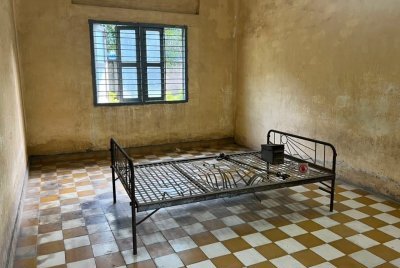
Before I began my Cambodian trip with ICOMOS in 2022, I had one free day to explore Phnom Penh. Among the many sites I visited, the infamous Killing Field and Tuol Sleng Genocide Museum left the deepest impression. Learning about the victims of the Khmer Rouge was profoundly depressing, yet I was somewhat reassured to know that, through international pressure, this dark history has been preserved under UNESCO’s Memory of the World program. What struck me, however, was the Cambodian government’s current push to inscribe these memorial sites as World Heritage. On one hand, the recognition would affirm the global significance of this tragedy. On the other, I worry it risks being used as political propaganda.
“The genocide will happen again if there is no peace” is a message I heard often in Cambodia. It echoes the “Thanks Peace” slogan of Hun Sen, the former prime minister—and once a Khmer Rouge member himself—who has long used the trauma of genocide to instill fear and consolidate power. That only a handful of Khmer Rouge leaders were prosecuted, while many others became Hun Sen’s allies, makes the situation even more complex. According to my guide, Cambodian schoolbooks devote only two sentences to the genocide, and many older people prefer silence as the memories are too painful. This raises the question: what meaning would a World Heritage listing hold for ordinary Cambodians?
From a heritage perspective, however, the sites do carry outstanding value. The Cambodian Genocide was one of …
Keep reading 0 comments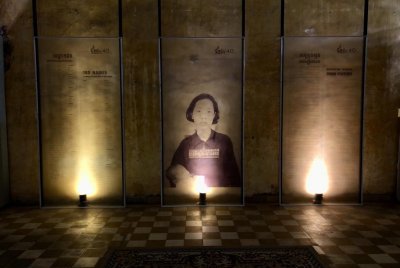
Visited February 2024
It seems that it is going to be the next Cambodian nomination for WH status… It is already seen in Phnom Penh’s Tuol Sleng Genocide Museum where a poster with WH logo welcomes you and lots of other tourists and pilgrims – most Cambodian citizens treat the visit to the site as a kind of pilgrimage to the so important place for their recent history. And I understand them and feel for them the same way I understand other national genocide sites, prisons and camps, but this kind of nominations and inscription don’t make me believe in the outstanding universal values that UNESCO list should promote. We have already the sites “to remember and never happen again” that are inscribed on the list.
Keep reading 0 comments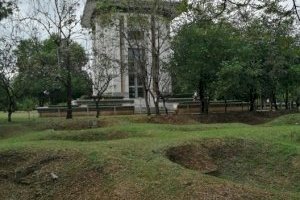
It's not often that a major city, especially a national capital, has genocide memorials as its most famous and important tourist attraction, but for all Phnom Penh has to offer, this is exactly the case. I flew into Phnom Penh to start my tour of Cambodia in January 2023, and Choeung Ek and Tuol Sleng were definitely the top priorities of my first day there. The Cambodian capital is unfortunately deficient in public transport, so I had the hotel call us a taxi which took us around the city for the whole day. This was quite fortunate as our driver was very knowledgeable about the different sites in the city, and he informed us that the two main genocide memorials had long lunch breaks; if you want to see them consecutively, make sure to leave early in the morning, or otherwise, you would have to fill up the 3-4 hours around noon with other things as we did (we checked out Wat Phnom, Wat Ounalom, and the Royal Palace, and even had lunch in between the two sites). Els already covers Tuol Sleng well in her review, so I'll mostly focus on Choeung Ek, the Killing Fields and the very first site I visited in the wonderful nation of the Khmer.
Choeung Ek is the farthest major Phnom Penh site from the city center; with the morning rush hour traffic, it took nearly an hour to get there from downtown. Despite the sprawling image conjured up by its name, …
Keep reading 0 comments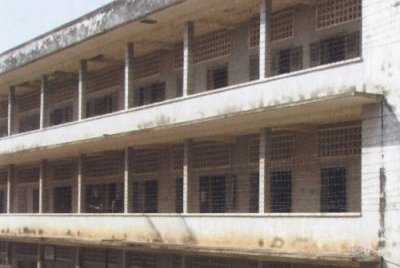
A few weeks ago, Cambodia has added 3 of its genocide memorials to the Tentative List as a serial proposal. The sites commemorate the victims of the Khmer Rouge regime, which was overthrown in 1979. The proposal still has the cumbersome working title “Former M-13 prison/ Tuol Sleng Genocide Museum (former S-21)/ Choeung Ek Genocidal Centre (former Execution Site of S-21)”.
I visited the former S-21 prison, now known as the Tuol Sleng Genocide Museum, in 2007. It is located in street 113 in the heart of Phnom Penh. In 2007 it saw some 50 visitors a day, but probably this has risen over the years due to the increase in global tourism - it is one of the few obvious “things to do” in the Cambodian capital. It is also a well-known place on the Dark Tourism circuit. Unfortunately I lost most of the photos of my visit, but I do still have my diary notes and the leaflet that was handed out upon entering the site.
The prison was located in an old school building. Between 1975 and 1978, some 12,000 prisoners were detained and tortured here. When further questioning was of no use, the prisoner was taken to the out-of-town Killing Fields (such as Choeung Ek, the third location of this serial tentative site). There he or she ended up in a mass grave.
The museum still resembles a school building, with classrooms, long corridors and a playground. The classrooms were divided into cells …
Keep reading 0 comments
